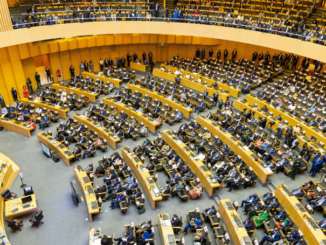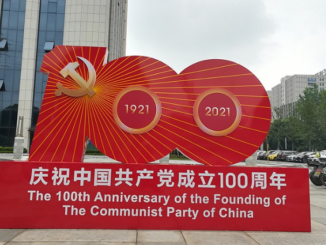
By Jim Miles
(Dying to Forget – Oil, Power, Palestine, & the Foundations of U.S. policy in the Middle East. Irene L. Gendzier. Columbia University Press, New York, 2017.)
Many books discuss the transition of U.S. interest in Palestine/Israel mostly through the lens of Truman’s Christian Zionism, either as a part of the political history involving Truman or a more generalized history of U.S. geopolitics in the post-war era.
Irene Genzier’s recent work, Dying to Forget – Oil, Power, Palestine, & the Foundations of U.S. policy in the Middle East, presents a much more highly focussed, well researched, more detailed account of the short period of time from 1945 to 1949. While Truman’s role is included, the main perspective of the book is on other players, mainly involved within the government at different levels.
What is revealed is a government at odds with itself, with different parties presenting different ideas on how to approach the situation, with the Israeli declaration of its independence (the Provisional Government of Israel, PGI) creating a new but not entirely unexpected scenario.
Several themes reach out from this detailed and well-documented history.
Oil and Communism
Of prime importance are the transitions made in general of U.S. policy. Originally the general idea was to say no to partition. Two factors influenced this perspective: oil and communism. The U.S. feared that by supporting partition – in essence supporting Israel – would create a backlash from its Arab oil-producing partners.
In its fear of communism, the U.S. saw the possibility of losing out on both sides: that the Arab countries would turn towards the Soviet Union if it accepted partition; and if it did not, then Israel would strengthen its ties with the Soviet Union (in recognition of the possible Jewish immigration from the USSR).
With the UN partition plan announced, the U.S. transited to a position of creating a truce (as fighting was already occurring between Palestinians and Jews) accompanied with a UN trusteeship with U.S. and Britain as the main sponsors. At this time the U.S. also recognized that Jewish forces, the Haganah, Irgun, and the Stern gang, were prepared and intending to use force in order to establish their new state.
Under these circumstances [Partition/trusteeship], “a new threat of Jewish attempts by violence to establish a de facto state in Palestine” would replace the previous threat of Arab aggression….it was also becoming clear that the structure of the future Jewish state was virtually in operation … The Jewish Agency would proceed with its intention “to go steadily ahead with the Jewish separate state by force of arms.”
The Israeli declaration of independence (May 14, 1948) realized the truth of both the threat of violence and the establishment of a provisional state. At this point, the two concerns about oil and communism rose to preeminence. The NSA, the Pentagon, the joint Chiefs of Staff, advocated for a pro-Israel alignment, partly as the Arab states were seen as weak and desiring U.S. economic support by way of oil sales.
The U.S. military recognized Israel’s value in terms of oil and defense and exclusion of the USSR from the Middle East….” It would be desirable for her [Israel’s] orientation toward the United States be fostered and for her military capability to be such as to make her useful as an ally in the event of war with our probable enemy.”
Israel’s Narrative – Foundational Myths
Throughout the work two Israeli myths are exposed, that of the supposed advantage of the Arab forces over the weak Jewish forces, and of the refugees “fleeing” under orders of Arab command.
There are numerous citations and iterations of U.S. awareness that the Jewish forces were superior in both numbers and equipment. Israeli historian Avi Shlaim says, “at each stage of the war, the IDF significantly outnumbered all the Arab forces arrayed against it, and by the final stage of the war its superiority ration was nearly two to one.”
U.S. State Department employee Robert McClintock said, in light of the Jewish military superiority which now obtains in Palestine, the Jewish Agency will prefer to … rely on its armed strength to defend the state from Arab counterattack.”
The second foundational myth of Arabs fleeing is also thoroughly rebutted. Even from the beginnings of Zionism, Theodor Herzl and Ze’ev Jabotinsky recognized the demographic threat of the Palestinian population for the future Jewish state. David Ben Gurion in 1930 indicated, “few, if any, of the Arabs, would uproot themselves voluntarily; the compulsory provision would have to be put into effect.”
That “compulsory provision” began before the declaration of independence and continued well after. After the partition plan, Ben Gurion advocated “the destruction of the place or the expulsion of the residents along with the seizure of the place.”
The Plan Dalet began before the actual ‘war’. It was “built on the foundations of the transfer policy and the rejection of repatriation.” Deir Yessin is the single most cited incident of a Jewish massacre, and as reported by Jacques de Reynier of the IRC, “there had been 400 people in the village about fifty of them had escaped and were still alive. All the rest had been deliberately massacred in cold blood.” Deir Yassin “became the single most important factor to the 1948 exodus.”
But is was not the only one, Israeli historian Benny Morris recognized “the liquidation of Arab villages involved as many as 100 massacres in 1948-49 alone.” Ethnic cleansing was paramount in the war. Another Israeli historian, Amnon Kapeliuk, drawing from Israeli sources, says, “The two main reasons for the Palestinian exodus of 1948 were expulsion by the Israeli army and fear of massacre.”
Israeli officials also recognized the need for ethnic cleansing. Yigal Allon, the Palmach officer in charge of Eastern Galilee, indicated “we regard it as imperative to cleans [of Arabs] the interior of the Galilee and create Jewish territorial continuity in the whole of Upper Galilee.”
Israeli soldiers, under the orders of Yitzhak Rabin, were an element of the partial ethnic cleansing that rid Israel of the majority of its Arab inhabitants” in Lydda and Ramle, with “between 50 000and 60 000 driven from their homes…forced to walk eastward…shedding their possessions along the way.”
At the end over 400 villages had been destroyed, erased from the landscape, while an estimated 700 000 to over 900 000 Palestinians became refugees.
Prophecy
The refugee crisis combined with the concerns over Arab oil control was not some dark horse that emerged after the final truce was settled. U.S. officials recognized that the refugee problem, the “cancerous Palestine situation” was “a threat to U.S.security and global peace.”
The refugees became a major concern of U.S. officials, who feared the pressure of caring for such a large number of refugees would lead to the destabilization and radicalization of the Middle East.
The U.S. also recognized that “if it occurred [Jewish expansion beyond the partition lines] it would lead to thousands of Palestinian refugees and a Jewish State dependent on U.S. financial, political, and military support.” The CIA in 1947 indicated “The Zionists will continue to wage a strong propaganda campaign in the U.S…and the U.S. government may, consequently, be forced into actions which will further complicate and embitter relations with the entire Arab world.”
It is not true prophecy, but obviously, there was some forethought given to how the future might unfold – and indeed did unfold, and continues to unfold. Fear of communism gave way to fear of terrorism, and oil control strengthened to become petrodollar control, and, as currently evident, a renewed fear of “Russian/Iranian/Chinese aggression” needing to be contained.
Dying to Forget is a tightly written, well-referenced examination of U.S. policy changes during the short period just before and after the Israeli declaration of independence. Along the way, it destroys two foundational myths of the Israeli state and highlights U.S. indecision and prevarication concerning its positions on Soviet influence and the role of its oil concessions in the region.
While this book is an intense research read, it is accessible as a strong place to start if one is interested in the general area of Middle East geopolitics. While it helps to have a basic outline of historical facts concerning World War II and its Middle East aftermath, it is clearly enough written to serve as an introduction to the current problems as centered on Israeli interests and the cancerous situation now existing in the region. It is a powerful, well-written review of a critical period of Palestinian history.
– Jim Miles is a Canadian educator and a regular contributor/columnist of opinion pieces and book reviews to Palestine Chronicles. His interest in this topic stems originally from an environmental perspective, which encompasses the militarization and economic subjugation of the global community and its commodification by corporate governance and by the American government.

– Jim Miles is a Canadian educator and a regular contributor/columnist of opinion pieces and book reviews to Palestine Chronicles. His interest in this topic stems originally from an environmental perspective, which encompasses the militarization and economic subjugation of the global community and its commodification by corporate governance and by the American government.







